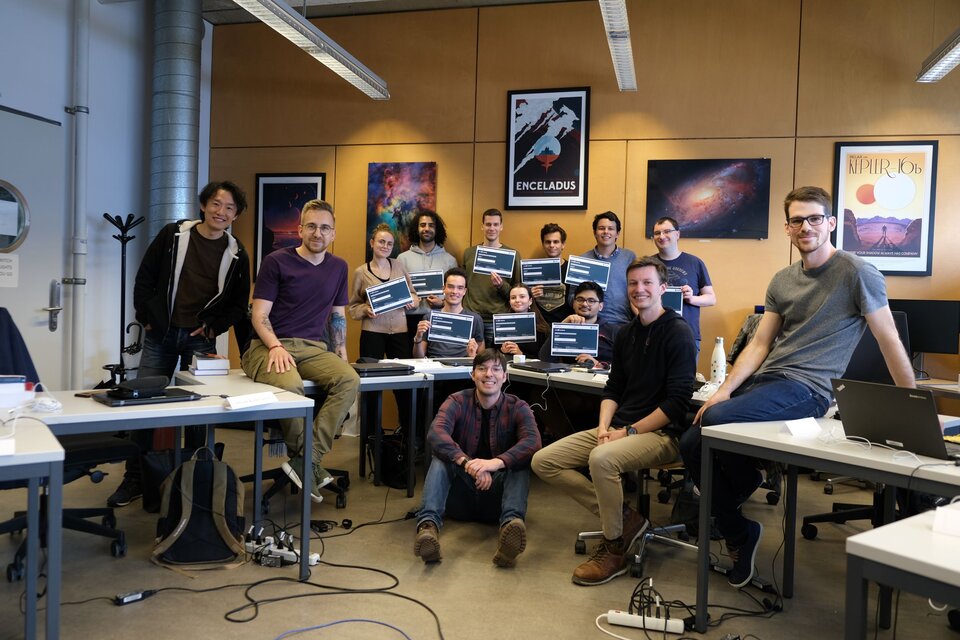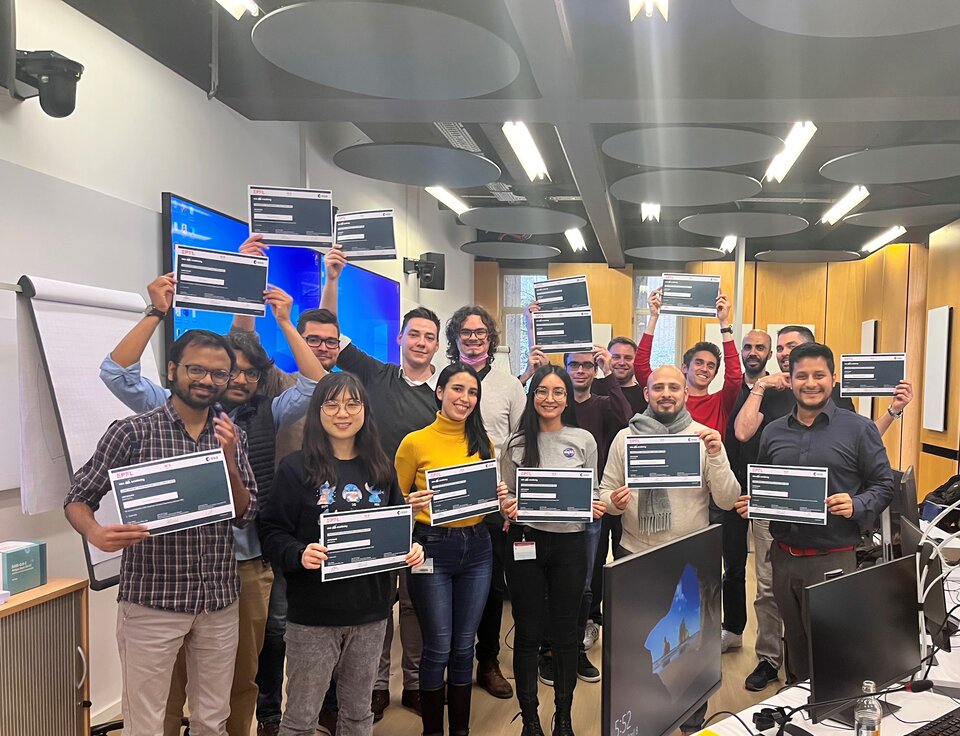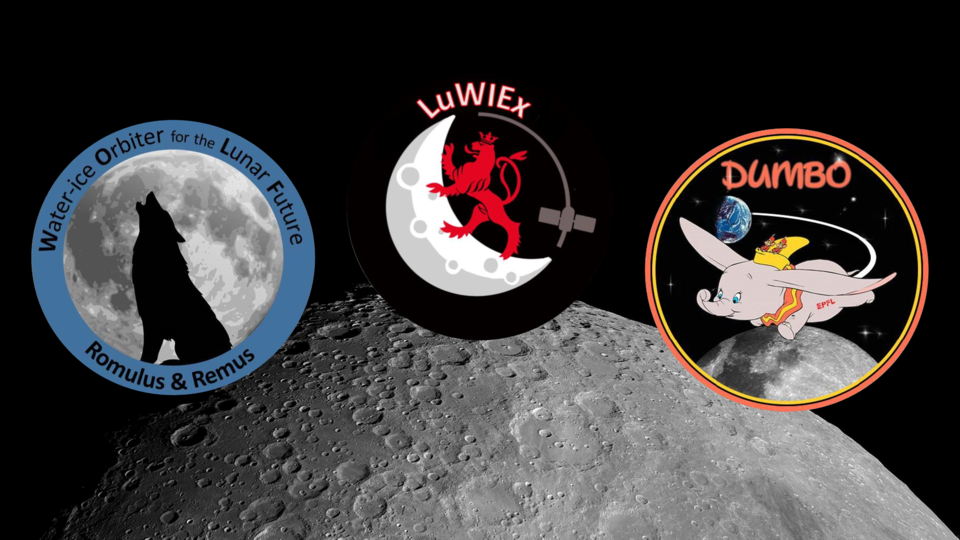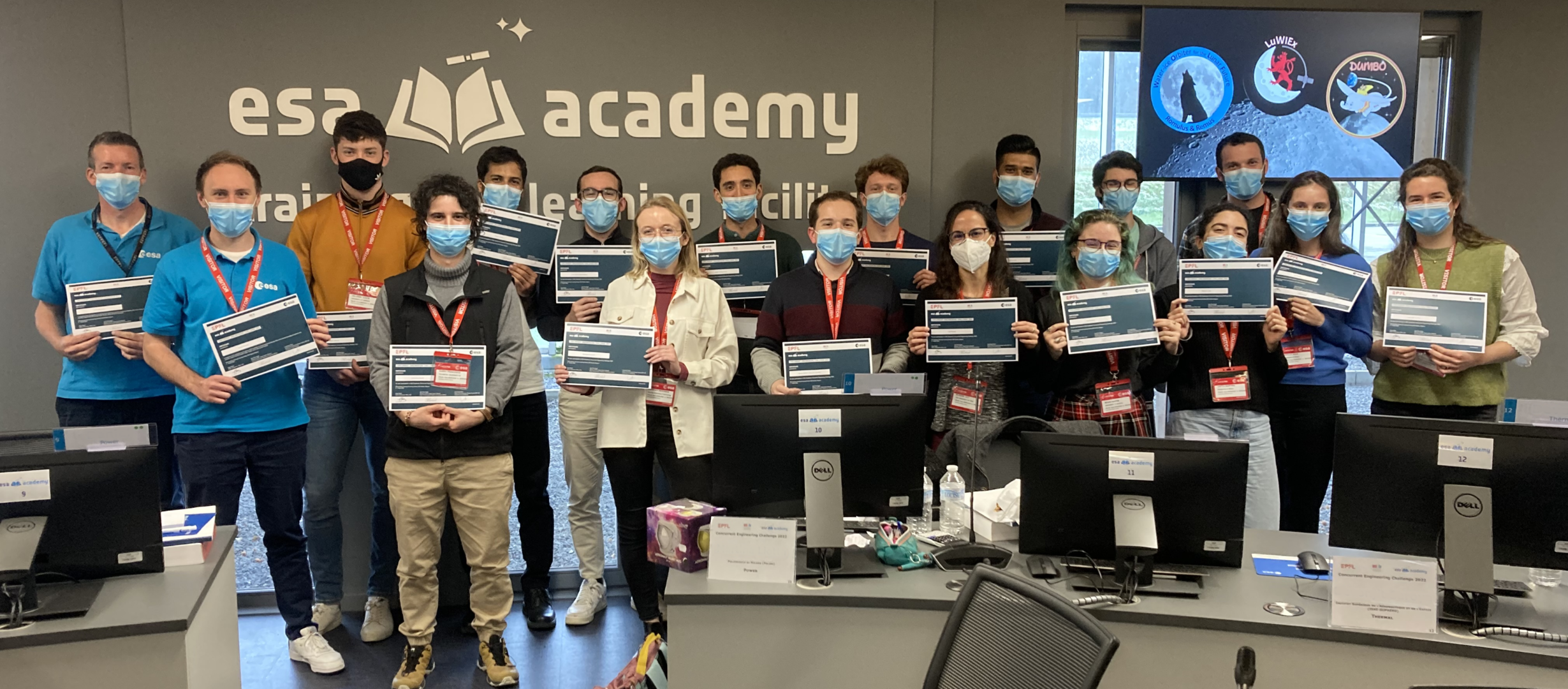Students design lunar water-prospecting missions for the Concurrent Engineering Challenge 2022!
In brief
Hosted at ESA Academy’s Training and Learning Facility, ESA-ESEC, Belgium, the Concurrent Engineering Challenge 2022 was originally planned in 2020, but was delayed due to the COVID-19 pandemic. The wait was well worth it, as the challenge – ultimately running from 4 to 8 April 2022 – proved to be a huge success.
In-depth
Cross-Europe collaborations

Participating on-site were 16 university students from eight different ESA Member States and Canada, closely mentored by two ESA Systems Engineers from ESA’s Systems and Concurrent Engineering Section. They were joined remotely by two additional groups of students and supporting staff from European universities equipped with their own Concurrent Engineering Facilities: EPFL, the Swiss Federal Institute of Technology in Lausanne (Switzerland); and Uni.lu, the University of Luxembourg. In total, 39 university students took part in this challenge.
“The organisation was a great interdisciplinary success from our team’s perspective,” explained a coordinator from Uni.lu. “The SnT research centre where our Concurrent Design Facility is located stands for ‘Interdisciplinary Centre for Security, Reliability and Trust’. Similarly, our student team had members from Space Systems, Space Communications, and Space Robotics research groups from SnT. So, putting together an interdisciplinary team and leading them in the challenge was a very rewarding experience for us that symbolises the interdisciplinary collaboration spirit of SnT and collaborative capabilities of concurrent design approach.”
Mission brief: find the lunar water!

The goal was to familiarise students with Concurrent Engineering, and also help universities to develop their own Concurrent Engineering Facilities. To achieve this, students were given a hypothetical mission to design using Concurrent Engineering. They were briefed that water on the Moon is a vital resource for future space missions to our celestial neighbour and into deep space. Finding and mapping sources of lunar water is very difficult, so the students were tasked with designing a prospecting mission to quantify water ice resources hidden in shadowy regions near the Moon’s poles. High-resolution mapping should be achieved via reflectometry between a Mothercraft and two CubeSats in lunar orbit.
"This challenge was a great experience!” enthused a student from EPFL. “We had the opportunity to discover the Concurrent Engineering approach to design a lunar mission. The use of this new working method, the collaboration and motivation of the students, and the commitment of the engineering team all contributed to make this week successful and enriching."
Each group came up with a mission name and patch:
- ESEC: WOLF (Water-Ice Orbiter for the Luna Future)
- Uni.lu: LuWIEx (Lunar Water Ice Explorer)
- EPFL: DUMBO (Dual Moon Beam Orbiter)
At each of the three sites, students were divided into subteams to cover key areas:
- Attitude and Orbit Control Subsystems
- Communications & Data Handling
- Configuration
- Power
- Propulsion
- Structures & Mechanisms
- Thermal
- Trajectory Analysis

Students hit the ground running by learning about the Concurrent Engineering approach from Systems Engineers of ESA’s Systems and Concurrent Engineering Section. They were then given a chance to experience the Concurrent Model-based Engineering Tool (COMET) they would be using during the challenge. Next on the agenda was exploring the Concurrent Engineering Facilities at their sites to discover the impressive resources at their disposal.
“It was an amazing experience,” said a student participating from ESEC. “I could learn more about System Engineering, concurrent design and working in ESA from the inside. I had the opportunity to design a satellite under the supervision of experienced engineers and meet wonderful people from around the world!”
Problems and solutions
The following day saw the three groups define their mission phases and system models. They performed a first concurrent engineering iteration, working in subteams on the different subsystem designs, making their first computations and budgets. It was soon discovered that there were many hurdles to overcome in order for their missions to succeed, such as the realisation that Vega rockets do not launch to lunar orbit, thereby requiring an additional transfer stage to transport the Mothercraft and CubeSats to the Moon. Students did not compete against each other, but rather used video conferencing and a live forum to share each day’s progress, raise any particular difficulties they were facing, and receive helpful input from participants in other groups.
Further iterations were then completed to continually improve the mission designs. The propulsion, communication, and power subsystems required particular attention, and the configuration experts were kept on their toes as the design of each subsystem changed with every iteration!
The groups froze their designs on the final day, and presented their results to their colleagues and the ESA experts. All three groups managed to devise a mission design that met the stringent requirements and constraints. Interestingly, each group identified a different orbit around the Moon from which the Mothercraft would operate, with corresponding impacts on final designs. It was fascinating for the students to discover other final satellite designs, and see how different solutions had been adopted to overcome the same challenges.
"This was an intense week with a complex challenge that was tackled by motivated, team-spirited groups,” reflected an organiser from EPFL. “The Concurrent Engineering Challenge 2022 was really interesting in both technical and soft skills aspects. It was also rewarding to see the results achieved in only a few days."
"The challenge was really educational,” added a student from Uni.lu, “not just from the perspective of Concurrent Engineering but it also gave a taste of what a professional role in a space agency or an engineering company would be like. The experience has encouraged me to pursue a career as spacecraft systems engineer."
To find more information about future ESA Academy training opportunities, please check our current opportunities.
Contact: tlp@esa.int


